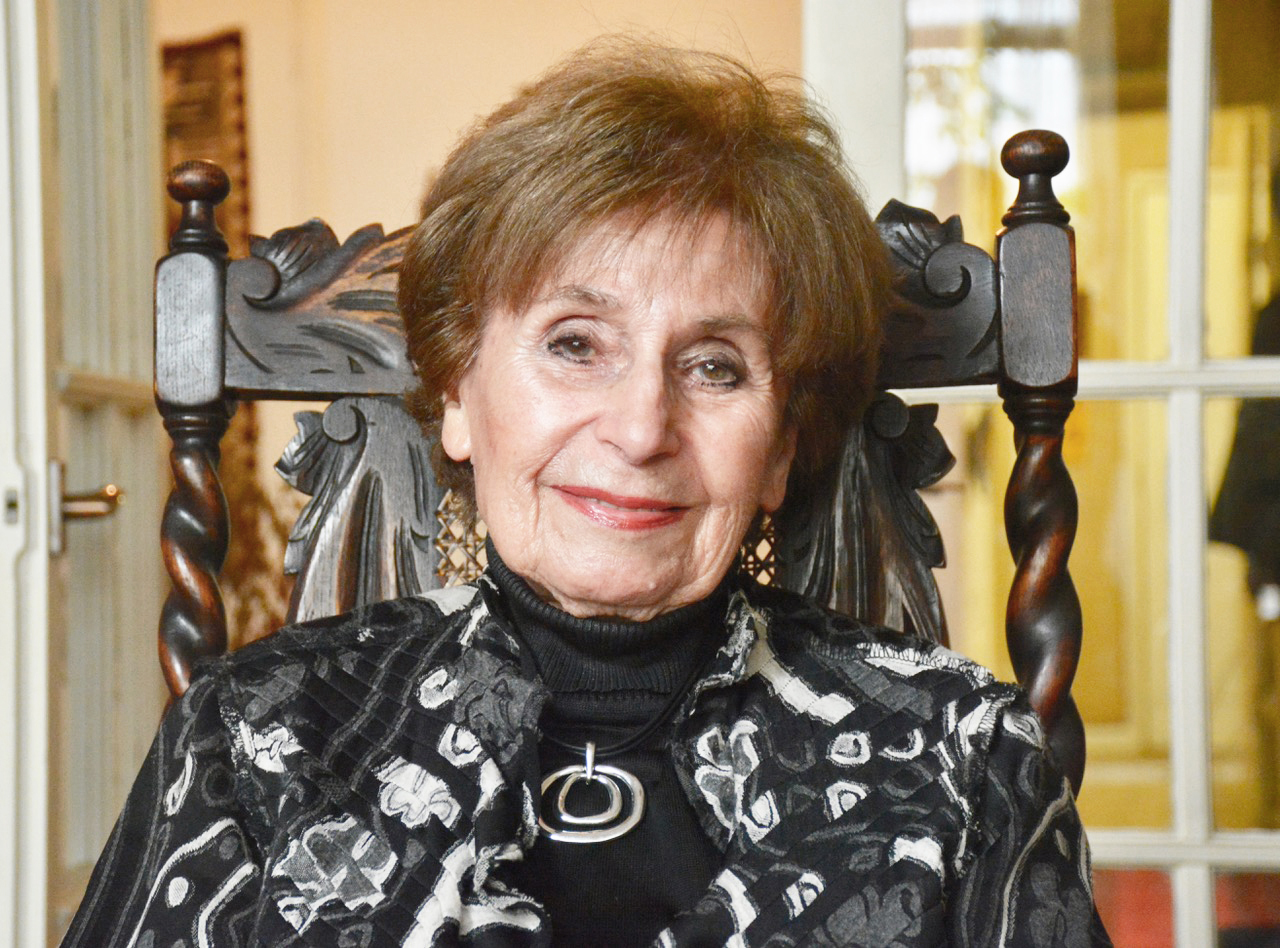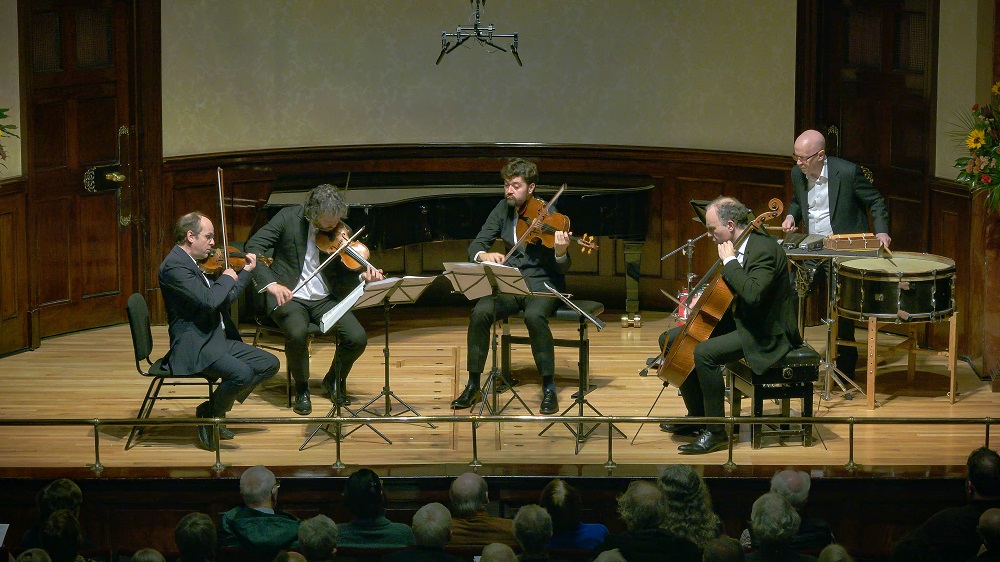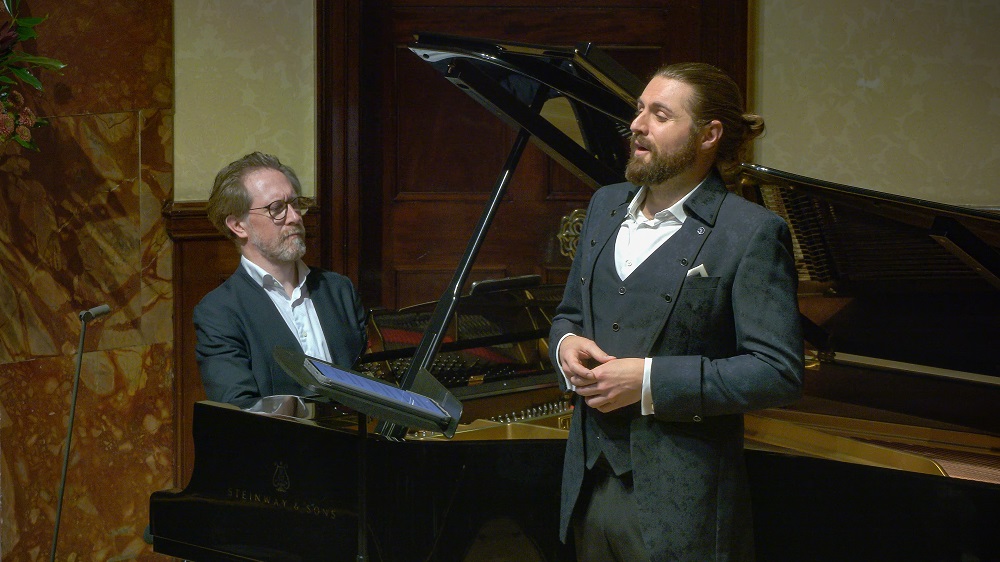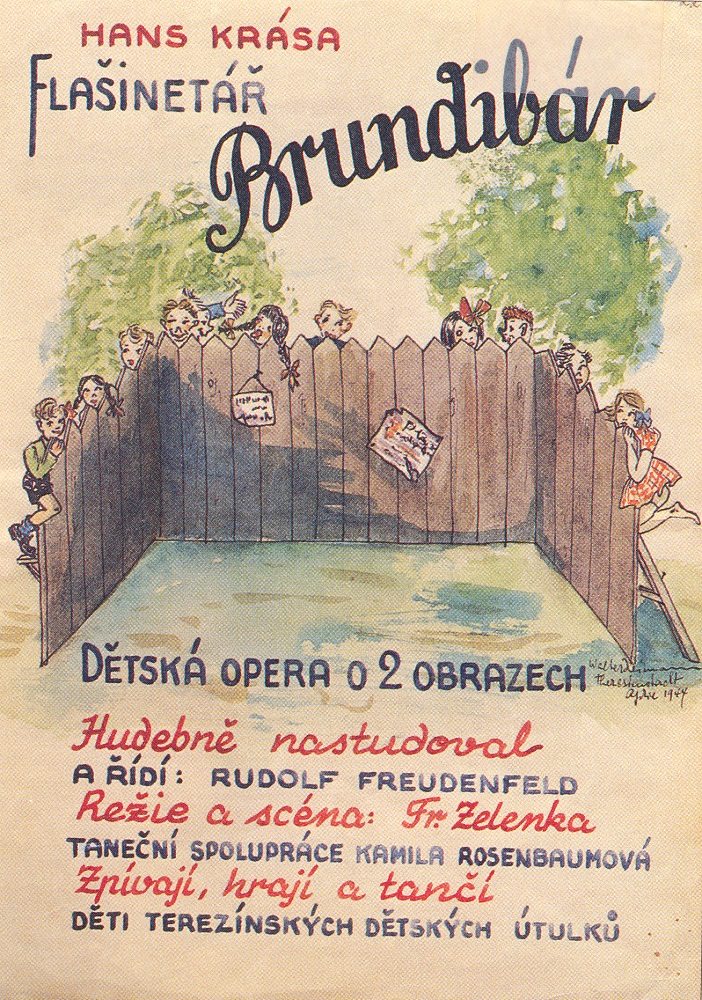Theresienstadt-Terezin 1941-1945, Nash Ensemble, Wigmore Hall review - memorial music of stunning impact | reviews, news & interviews
Theresienstadt-Terezin 1941-1945, Nash Ensemble, Wigmore Hall review - memorial music of stunning impact
Theresienstadt-Terezin 1941-1945, Nash Ensemble, Wigmore Hall review - memorial music of stunning impact
Masterpieces from composers murdered by the Nazis in a rich day of offerings

Towards the end of his book Killers of the Flower Moon, David Grann deploys a cogent expression: “chasing history, before it disappears”.
Last time the Nash Ensemble devoted a weekend here to music from the Terezín concentration camp, in 2010, there were discussion panels with survivors of that strangest, eeriest of narratives from the Shoah. Zdenka Fantlová (pictured below, then living in Bayswater Road, having survived the camp, Auschwitz and Belsen) described the performance of music and plays when doomed to die as “dancing under the gallows”.
With hindsight, that is: no one, she says, knew what the “Transports” to “the East” entailed, as the Nazis not only allowed but encouraged the composition and performance of some of the best music of its generation in Terezín, before boarding its composers and players onto the cattletrucks bound for Auschwitz and the ovens. Fantlová was separated from her mother by Josef Mengele himself, next in line on the ramp behind the great Czech conductor Karel Ančerl, who also survived, though his wife and son were directed the other way, and perished.  Helga Weissowá-Hošková – who survived Terezín, Auschwitz and Mathausen – was asked in a Q&A: “Were any children born in Terezín?” A good question, she replied, “not that I recall, but I remember a baby born on the platform when we arrived at Mathausen”. A lady in the audience stood up: “Er, could I just say: I am that child”.
Helga Weissowá-Hošková – who survived Terezín, Auschwitz and Mathausen – was asked in a Q&A: “Were any children born in Terezín?” A good question, she replied, “not that I recall, but I remember a baby born on the platform when we arrived at Mathausen”. A lady in the audience stood up: “Er, could I just say: I am that child”.
The woman who gave birth on the platform, Anka Bergman, still lived then, as did Fantlova, and an accomplished pianist called Alice Herz-Sommer who was living in Hampstead. But all three have since died. Yet Fantlova, Herz-Sommer and others reappeared in a wonderful film which opened the day’s gruelling but inspired and inspiring proceedings: The Music of Terezín, made in 1994 by Simon Broughton – who has devoted the best part of his talent and life chasing this history. The history that Broughton, myself and others were chasing back then has largely “disappeared” in human form, but the music remains: that is the point.
With nerve-ends already exposed by the testimony in Broughton’s film, we embarked on a first, late matinée concert, opening with Gideon Klein’s String Trio (originally intended to be a quartet, but the second violinist was transported to Auschwitz). The piece has vim and vigour, but at its core is a Moravian folk song, like a call from pastures beyond the camp walls, a passage of which Adrian Brendel played with almost painful yearning.
But the kernel of the matinée was Pavel Haas’ String Quartet No. 2, "From the Monkey Mountains", written in 1925, thereby establishing the notion of a thriving Czech music scene transported to the camp, not one born of or necessarily defined by it. Vividly programmatic, it contains the lovely personal meditation, “The Moon and Me”.  At the end, a twist: the short Song Without Words for string quartet, of unapologetically lyrical charm, first performed secretly in an attic during the depths of 1942 by František Domažlicky, one of the few composers to survive.
At the end, a twist: the short Song Without Words for string quartet, of unapologetically lyrical charm, first performed secretly in an attic during the depths of 1942 by František Domažlicky, one of the few composers to survive.
The main evening concert opened with Viktor Ullmann’s charged Third String Quartet, a masterpiece by any standards, wherever written. With its contrasts of reflection and assertion; ghostly viola in the Largo followed by an Allegro finale with moments of attestation and wilful escape.
In a brilliant stroke of programming, next came Smetana’s glorious Piano Trio in G minor – by way of essential ancestry. Throughout, the music from Terezín is inescapably infused by the Bohemian nationalist romantic tradition – Dvorák’s and Smetana’s depiction of landscape, and invocation of folk songs and melodies. Music written out of love for Ma Vlast, my homeland, by way of insurgent defiance of imperial rule from Vienna. The evening was hallmarked by the recurrent and infectious lilt of folk and gypsy dances, especially as played with such evocation by Lawrence Power on viola – subversive in their day and way.  But the sonorities and moods of Haas, Ullmann, Klein and Krása are also modern and modernist – experimentally and efficaciously so. Sometimes, the spectral dissonances stroke those exposed nerve-endings just a little too roughly, by design. Moments of bleak desolation are of their era and place – this time both expressive, and in defiance, of the industrial mass-murder of Jews a century later, also by the Germanic world. Like the music of their forebears, this from Terezín is an affirmation of life and life’s value, now pitched against death and the Nazi cult of death. “The gardener, death… harvesting the meadows, ripe corn of suffering”, so reads the libretto of Viktor Ullmann’s Der Kaiser von Atlantis – banned by the SS censors for its ridicule of Adolf Hitler.
But the sonorities and moods of Haas, Ullmann, Klein and Krása are also modern and modernist – experimentally and efficaciously so. Sometimes, the spectral dissonances stroke those exposed nerve-endings just a little too roughly, by design. Moments of bleak desolation are of their era and place – this time both expressive, and in defiance, of the industrial mass-murder of Jews a century later, also by the Germanic world. Like the music of their forebears, this from Terezín is an affirmation of life and life’s value, now pitched against death and the Nazi cult of death. “The gardener, death… harvesting the meadows, ripe corn of suffering”, so reads the libretto of Viktor Ullmann’s Der Kaiser von Atlantis – banned by the SS censors for its ridicule of Adolf Hitler.
The second half of the evening concert was a revelation, testimony to the Nash Ensemble’s invariably restless innovation. It was made up of songs, superbly delivered by Konstantin Krimmel and Simon Crawford-Phillips (pictured above). Most moving were those by Ilse Weber, the only woman on the programme, whose balefully beautiful verses and melodies directly address the perverse horror of their writing. Unlike Fantlova’s naiveté, she seems to know exactly what is happening: “Night slips through the ghetto / So black and silent”… And even: “Farewell, my friend / This is where our ways part / For tomorrow I have to leave… Transported to Poland”.
 The shattering event ended, fittingly, with a suite from Krása’s children’s opera Brundibar, charming, rich and buoyant – but heartbreakingly so for its backstory. Two things happened after the work was performed to a team of inspectors from the International Committee of the Red Cross: one, the entire cast of children was transported to Auschwitz where most were lost to the ovens; two, the Red Cross gave Terezín an enthusiastic report and clean bill of health.
The shattering event ended, fittingly, with a suite from Krása’s children’s opera Brundibar, charming, rich and buoyant – but heartbreakingly so for its backstory. Two things happened after the work was performed to a team of inspectors from the International Committee of the Red Cross: one, the entire cast of children was transported to Auschwitz where most were lost to the ovens; two, the Red Cross gave Terezín an enthusiastic report and clean bill of health.
The question unavoidably arises: to what extent should this music be defined by – almost confined to – its poignant and unimaginable, unique context? There’s an echo of the debate over – almost battle for – Dmitri Shostakovich: to what degree is his music commentary on circumstance, or free of it, and universal?
The discussion was already begun in Broughton’s excellent film, by one of the curators of the memory of Terezín, David Bloch: “they should not be regarded as Terezín composers” he said. This programme was part of a series by the Nash of Czech music, and fits into that tradition, apart from the unthinkable circumstances under which these pieces were written.
As the Haas quartet of 1925 demonstrated, this is not just a matter of composers and musicians being murdered, but of almost an entire generation of already great Czech music – direct heirs to and pupils of Schoenberg and Janáček – being exterminated in its prime.
But, Bloch added, their music “cannot be divorced from its origins in the ghetto”. An intelligent compromise: it certainly cannot, and for that it is almost unbearably powerful, witness to its time – but also to all time, including the conflagrations of now.
Concerts free to view on YouTube
rating
Share this article
The future of Arts Journalism
You can stop theartsdesk.com closing!
We urgently need financing to survive. Our fundraising drive has thus far raised £49,000 but we need to reach £100,000 or we will be forced to close. Please contribute here: https://gofund.me/c3f6033d
And if you can forward this information to anyone who might assist, we’d be grateful.

Subscribe to theartsdesk.com
Thank you for continuing to read our work on theartsdesk.com. For unlimited access to every article in its entirety, including our archive of more than 15,000 pieces, we're asking for £5 per month or £40 per year. We feel it's a very good deal, and hope you do too.
To take a subscription now simply click here.
And if you're looking for that extra gift for a friend or family member, why not treat them to a theartsdesk.com gift subscription?
more Classical music
 From Historical to Hip-Hop, Classically Black Music Festival, Kings Place review - a cluster of impressive stars for the future
From quasi-Mozartian elegance to the gritty humour of a kitchen inspection
From Historical to Hip-Hop, Classically Black Music Festival, Kings Place review - a cluster of impressive stars for the future
From quasi-Mozartian elegance to the gritty humour of a kitchen inspection
 Shibe, LSO, Adès, Barbican review - gaudy and glorious new music alongside serene Sibelius
Adès’s passion makes persuasive case for the music he loves, both new and old
Shibe, LSO, Adès, Barbican review - gaudy and glorious new music alongside serene Sibelius
Adès’s passion makes persuasive case for the music he loves, both new and old
 Anja Mittermüller, Richard Fu, Wigmore Hall review - a glorious hall debut
The Austrian mezzo shines - at the age of 22
Anja Mittermüller, Richard Fu, Wigmore Hall review - a glorious hall debut
The Austrian mezzo shines - at the age of 22
 First Person: clarinettist Oliver Pashley on the new horizons of The Hermes Experiment's latest album
Compositions by members of this unusual quartet feature for the first time
First Person: clarinettist Oliver Pashley on the new horizons of The Hermes Experiment's latest album
Compositions by members of this unusual quartet feature for the first time
 Gesualdo Passione, Les Arts Florissants, Amala Dior Company, Barbican review - inspired collaboration excavates the music's humanity
At times it was like watching an anarchic religious procession
Gesualdo Passione, Les Arts Florissants, Amala Dior Company, Barbican review - inspired collaboration excavates the music's humanity
At times it was like watching an anarchic religious procession
 Classical CDs: Camels, concrete and cabaret
An influential American composer's 90th birthday box, plus British piano concertos and a father-and-son duo
Classical CDs: Camels, concrete and cabaret
An influential American composer's 90th birthday box, plus British piano concertos and a father-and-son duo
 Cockerham, Manchester Camerata, Sheen, Martin Harris Centre, Manchester review - re-enacting the dawn of modernism
Two UK premieres added to three miniatures from a seminal event of January 1914
Cockerham, Manchester Camerata, Sheen, Martin Harris Centre, Manchester review - re-enacting the dawn of modernism
Two UK premieres added to three miniatures from a seminal event of January 1914
 Kempf, Brno Philharmonic, Davies, Bridgewater Hall, Manchester review - European tradition meets American jazz
Bouncing Czechs enjoy their Gershwin and Brubeck alongside Janáček and Dvořák
Kempf, Brno Philharmonic, Davies, Bridgewater Hall, Manchester review - European tradition meets American jazz
Bouncing Czechs enjoy their Gershwin and Brubeck alongside Janáček and Dvořák
 Solomon, OAE, Butt, QEH review - daft Biblical whitewashing with great choruses
Even a top soprano and mezzo can’t make this Handel paean wholly convincing
Solomon, OAE, Butt, QEH review - daft Biblical whitewashing with great choruses
Even a top soprano and mezzo can’t make this Handel paean wholly convincing
 Two-Piano Gala, Kings Place review - shining constellations
London Piano Festival curators and illustrious friends entertain and enlighten
Two-Piano Gala, Kings Place review - shining constellations
London Piano Festival curators and illustrious friends entertain and enlighten
 Echo Vocal Ensemble, Latto, Union Chapel review - eclectic choral programme garlanded with dance
Beautiful singing at the heart of an imaginative and stylistically varied concert
Echo Vocal Ensemble, Latto, Union Chapel review - eclectic choral programme garlanded with dance
Beautiful singing at the heart of an imaginative and stylistically varied concert
 Scott, Irish Baroque Orchestra, Whelan, RIAM, Dublin review - towards a Mozart masterpiece
Characteristic joy and enlightenment from this team, but a valveless horn brings problems
Scott, Irish Baroque Orchestra, Whelan, RIAM, Dublin review - towards a Mozart masterpiece
Characteristic joy and enlightenment from this team, but a valveless horn brings problems

Add comment